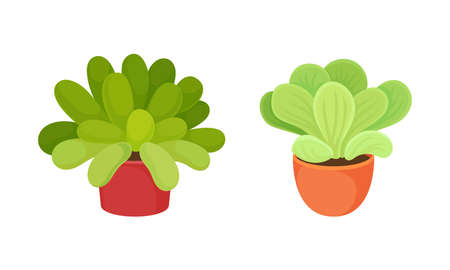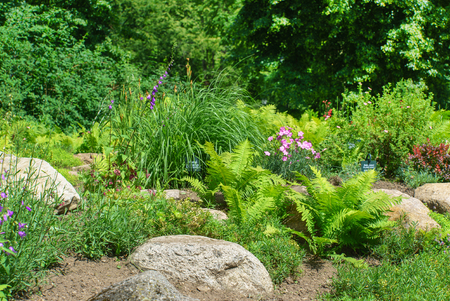Understanding Successional Planting with Bulbs
In British gardens, achieving year-round interest and colour can be a delightful challenge. Successional planting is a thoughtful approach where different plants take turns to flower across the seasons, ensuring there’s always something to catch the eye. Bulbs are particularly valuable in this scheme, as they offer bursts of colour when many other plants are resting. From the first snowdrops peeping through the winter soil to late-summer nerines, bulbs bridge the gap between seasons and fill your borders with continuous vibrancy. Their unique life cycles allow gardeners to weave layers of interest, making bulbs an essential part of succession planting in the UK climate.
2. Choosing the Right Bulbs for British Gardens
When selecting bulbs to create successional colour in British gardens, it’s essential to consider the UK’s variable climate, diverse soil types, and traditional planting schemes. The right choices will ensure a seamless display from early spring through late summer and even into autumn. Here’s how to make smart selections for maximum impact.
Understanding Climate and Soil
Britain’s temperate climate with mild winters and cool, often wet summers is favourable for many bulb species, but it’s important to match bulbs to your local conditions. Drainage is key; while some bulbs tolerate heavier soils, most prefer well-drained ground to prevent rot. Raised beds or adding grit can help where clay prevails.
Recommended Bulbs by Soil Type
| Soil Type | Classic Favourites | Modern Choices |
|---|---|---|
| Sandy/Free-draining | Tulips, Alliums | Camasia, Nectaroscordum |
| Clay/Heavy | Narcissus (Daffodils), Bluebells | Erythronium, Fritillaria meleagris |
| Loamy/Neutral | Crocus, Hyacinths | Anemone blanda, Scilla siberica |
Classic vs Modern Favourites
Traditional British gardens often feature beloved classics such as snowdrops (Galanthus), daffodils (Narcissus), and bluebells (Hyacinthoides non-scripta). These are reliable performers that naturalise well and evoke a sense of timeless beauty. For a more contemporary twist, consider alliums for architectural interest or Camassia for striking blue spikes in damp meadows. Combining both classic and modern bulbs creates depth and extended interest across the seasons.
Planting Schemes and Design Tips
- For cottage gardens: Layer snowdrops, crocuses, and tulips among perennials for bursts of early colour.
- Formal borders: Use swathes of narcissus followed by alliums for structure and rhythm.
- Naturalistic styles: Drift bluebells under trees or combine fritillarias with grasses for a wildflower effect.
Key Takeaway:
Select bulbs not just for their bloom time but also their compatibility with your garden’s soil and style. Blending time-honoured favourites with bold new varieties ensures continuous colour and a garden full of character throughout the year.

3. Creating a Seasonal Calendar for Continuous Colour
One of the keys to achieving successional colour in British gardens is careful planning with a seasonal calendar. By mapping out when each bulb variety blooms, you can enjoy waves of colour from early spring right through to late autumn. Start by making a simple chart or spreadsheet listing your chosen bulbs alongside their expected flowering times. For example, snowdrops and crocuses will brighten up the garden as early as February, followed by daffodils and tulips in March and April. In late spring to early summer, alliums and camassias take centre stage, while lilies and gladioli provide bold hues throughout midsummer. As autumn approaches, nerines and colchicums offer a final flourish of colour.
It’s practical to group bulbs by their season: early spring, mid-spring, late spring, summer, and autumn. This helps identify any gaps where the garden might look bare, allowing you to fill them with overlapping varieties. Remember to consider local climate and microclimates within your own space, as these can affect flowering times slightly.
For added convenience, use colour-coded markers on your calendar for each season or type of bulb. This visual approach makes it easier to spot any periods lacking interest, ensuring a seamless transition between different flowers. With this methodical planning, you’ll create a dynamic display that evolves beautifully over the months—something truly treasured in British gardening tradition.
Layering Techniques and Combination Planting
To create a garden that delights from early spring through late summer, layering bulbs is a tried-and-true British gardening technique. By thoughtfully arranging bulbs at different depths and mixing them with established perennials and shrubs, you can ensure waves of colour as the seasons unfold. Here are some practical tips for maximising impact and achieving a harmonious look in your borders.
Tips for Arranging Bulbs in Layers
- Depth Matters: Plant larger bulbs like tulips or daffodils deeper (about 15cm), with smaller bulbs such as crocus or snowdrops above them (around 8cm). This allows each type to emerge at its natural time without crowding.
- Successional Blooming: Select bulbs with staggered flowering times—early snowdrops, mid-spring daffodils, followed by late tulips or alliums—to keep colour flowing through the months.
- Naturalistic Groupings: For a more relaxed British style, plant bulbs in informal drifts or clusters instead of rigid lines. This mimics how they might appear in the wild and softens formal beds.
Complementing Perennials and Shrubs
- Choose Compatible Companions: Pair bulbs with classic British perennials like geraniums, astrantia, or hostas. These fill gaps left as bulb foliage fades and provide continuous interest.
- Shrub Backdrops: Plant bulbs near deciduous shrubs such as dogwoods or viburnums. The fresh spring growth of bulbs brightens up bare branches, while shrubs later offer structure as bulbs die back.
Example Layering Combinations
| Bulb Layer | Plant Type | Bloom Time | Companion Suggestions |
|---|---|---|---|
| Top | Crocus, Snowdrops | Late winter–Early spring | Euphorbia, Hellebores |
| Middle | Daffodils, Hyacinths | Mid spring | Pulmonaria, Hardy Geraniums |
| Base | Tulips, Alliums | Late spring–Early summer | Astrantia, Alchemilla mollis |
Final Touches for Harmony
Avoid overcrowding by spacing bulbs according to packet instructions, and allow room for neighbouring plants to mature. Mulch lightly after planting to retain moisture and suppress weeds. With careful planning and these layering techniques, your British garden will enjoy a seamless display of colour that feels both natural and beautifully curated.
5. Classic British Garden Design Inspiration
Across the United Kingdom, both traditional and contemporary garden styles offer a wealth of inspiration for integrating bulbs to achieve successional colour and enduring interest. In classic English cottage gardens, bulbs like daffodils, tulips, and bluebells are often woven through herbaceous borders, lending bursts of colour that enliven the soft tapestry of perennials and shrubs. The formality of Georgian and Victorian-era gardens is enhanced by neat drifts of spring bulbs beneath clipped box hedges and among stately lawns, providing early-season vibrancy amid structured designs.
Traditional Styles: Timeless Texture and Contrast
In historic walled gardens and grand estates, bulbs are used to create layers of texture and subtle contrast. Snowdrops and crocuses emerge first, followed by narcissi and alliums, their forms punctuating the greenery with elegant silhouettes. These schemes are carefully planned so that as one group fades, another comes into bloom, ensuring a seamless display from late winter into summer.
Contemporary Approaches: Naturalistic Planting
Modern British gardens increasingly favour naturalistic planting styles inspired by wildflower meadows and woodland glades. Here, bulbs such as camassias, fritillaries, and species tulips are scattered through long grasses or under native trees. This approach creates a relaxed atmosphere while supporting local wildlife. The result is a dynamic landscape where bulbs contribute not only colour but also ecological value.
Year-Round Interest Through Layering
Integrating bulbs in layers—planting them at different depths and combining early- and late-flowering varieties—ensures continuous interest throughout the year. This technique works equally well in formal beds, informal borders, or even containers on patios. By thoughtfully blending bulbs with other seasonal plants, British gardeners can achieve textured contrasts that evolve month by month.
Celebrating Regional Variations
The diverse climates across the UK—from the mild south-west to the cooler north—allow for regional adaptations in bulb selection and design. Whether it’s the iconic bluebell woods of England or vibrant crocus carpets in Scottish borders, these distinctive displays showcase how bulbs are an integral part of Britain’s gardening heritage, uniting tradition with contemporary creativity for gardens brimming with life all year round.
6. Aftercare and Sustainable Gardening Tips
Once your bulbs are planted and blooming in succession, thoughtful aftercare is essential for long-lasting displays and a flourishing, wildlife-friendly garden. Below are practical maintenance guidelines and sustainable gardening practices tailored to British conditions.
Post-Flowering Care for Bulbs
Allow the foliage of spent bulbs to die back naturally, as this helps replenish the bulb’s energy reserves for next year’s growth. Avoid tying or cutting back leaves prematurely. Instead, hide fading foliage with neighbouring perennials or ground covers for a tidy look while still supporting bulb longevity.
Feeding and Watering Wisely
In the British climate, bulbs generally thrive in well-drained soil without excessive watering. During dry spells, water deeply but infrequently to encourage strong roots. Use organic mulch or leaf mould around plantings to conserve moisture and boost soil health. An application of a balanced, slow-release fertiliser after flowering will help bulbs recover and store nutrients for future seasons.
Pest Management with Nature in Mind
Encourage natural predators such as birds, hedgehogs, and beneficial insects by providing habitats like log piles or wild corners. Avoid using chemical pesticides; instead, try companion planting—mixing bulbs with alliums or strongly scented herbs can deter common pests like aphids and slugs.
Supporting Wildlife Year-Round
Select nectar-rich bulbs such as crocuses and alliums to attract early pollinators. Leave some seed heads standing into autumn to provide food for birds. Complement your bulb scheme with native wildflowers and grasses that offer shelter and sustenance to British wildlife throughout the year.
Promoting Perennial Performance
Divide overcrowded clumps of bulbs every few years in late summer or early autumn to maintain vigour and increase blooms. Replant healthy offsets promptly for continued successional colour. Rotate planting areas if possible to reduce disease build-up in the soil and refresh tired displays.
A Greener Garden for the Future
By combining careful aftercare with eco-friendly approaches, you’ll ensure your successional bulb displays remain vibrant, resilient, and beneficial to local wildlife—embodying the best traditions of sustainable British gardening.


